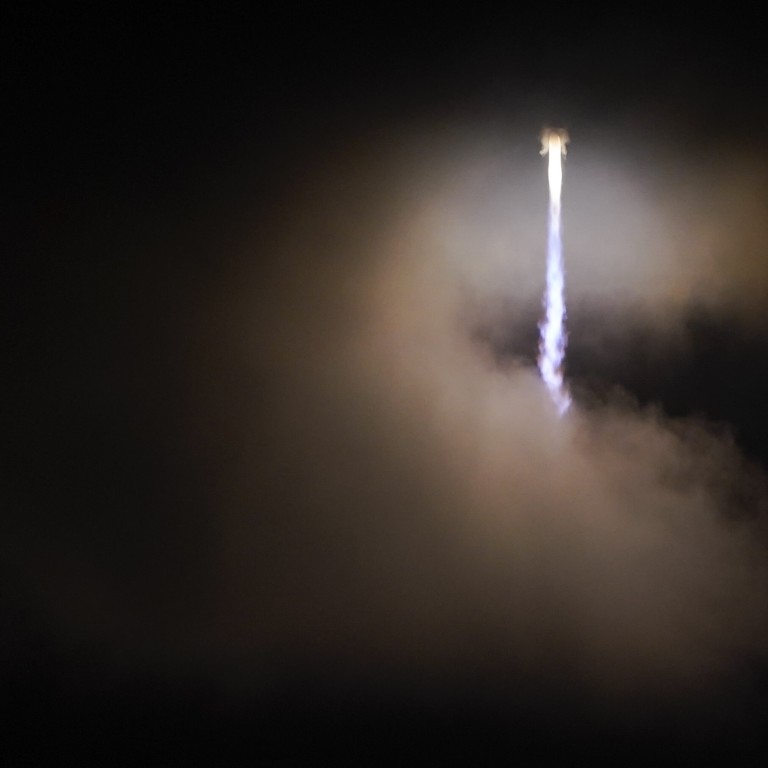
Nasa launches ‘Lucy’ to explore Jupiter asteroids, learn about solar system
- 12-year mission first to study Trojans, huge rocky objects orbiting the sun, the ‘fossils’ of planet formation
- Could shed more light on how Earth came to be formed, say scientists
The space probe, dubbed Lucy and packed inside a special cargo capsule, lifted off on schedule from Cape Canaveral Air Force Station in Florida at 5:34am EDT (0934 GMT), Nasa said.
Lucy will also become the first solar-powered spacecraft to venture so far from the Sun.
The largest known Trojan asteroids, named for the warriors of Greek mythology, are believed to be as much as 225km (140 miles) in diameter.
Scientists hope Lucy’s close-up fly-by will yield new clues to how the solar system’s planets came to be formed some 4.5 billion years ago and what shaped their present configuration.
Believed to be rich in carbon compounds, the asteroids may even provide new insights into the origin of organic materials and life on Earth, Nasa said.

01:21
Chinese astronauts return to Earth in re-entry capsule from Tiangong space station
“The Trojan asteroids are leftovers from the early days of our solar system, effectively the fossils of planet formation,” principal mission investigator Harold Levison of the Southwest Research Institute in Boulder, Colorado, was quoted by Nasa as saying.
Some are grey, while others are red, with the differences indicating how far away from the Sun they might have formed before assuming their present trajectory.
No other single science mission has been designed to visit as many different objects independently orbiting the sun in the history of space exploration, Nasa said.
As well as the Trojans, Lucy will do a fly-by of an asteroid in the solar system’s main asteroid belt, called Donald Johanson in honour of the lead discoverer of the fossilised human ancestor known as Lucy, from which the Nasa mission takes its name.
The Lucy fossil, unearthed in Ethiopia in 1974, was in turn named for the Beatles hit “Lucy in the Sky with Diamonds”, which was being played loudly at the expedition camp. The fossil helped shed light on human evolution.
The asteroid probe will make space flight history in another way. Following a route that circles back to Earth three times for gravitational assists, Lucy will be the first spacecraft ever to return to Earth’s vicinity from the outer solar system, according to Nasa.
The probe will use rocket thrusters to manoeuvre in space and two rounded solar arrays (that convert energy to electricity), each the width of a school bus, to recharge batteries that will power the instruments contained in the much smaller central body of the spacecraft.
Lucy was carried up by an Atlas V rocket from United Launch Alliance (UAL), a joint venture of Boeing Co and Lockheed Martin Corp.
Additional reporting, AFP

